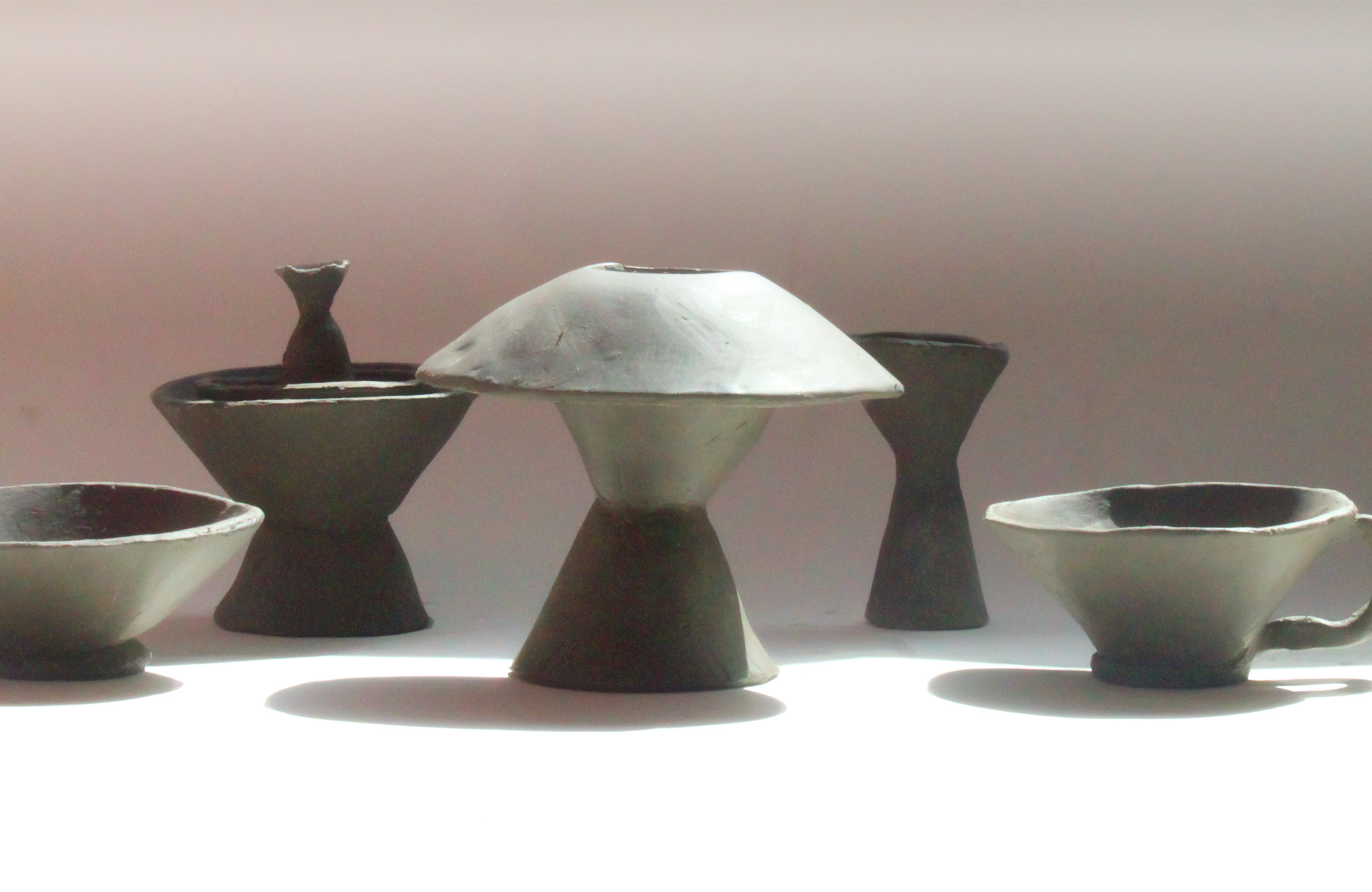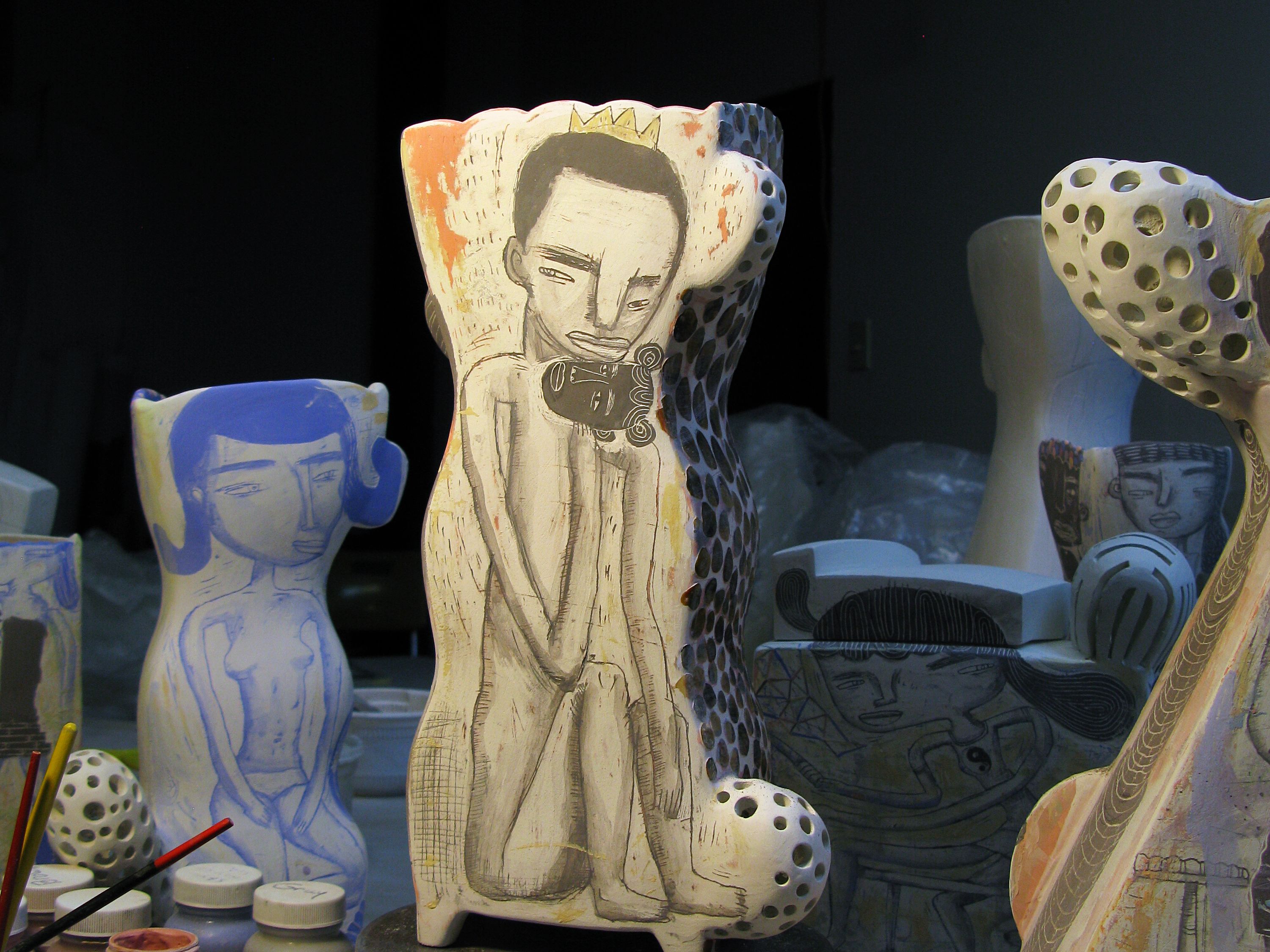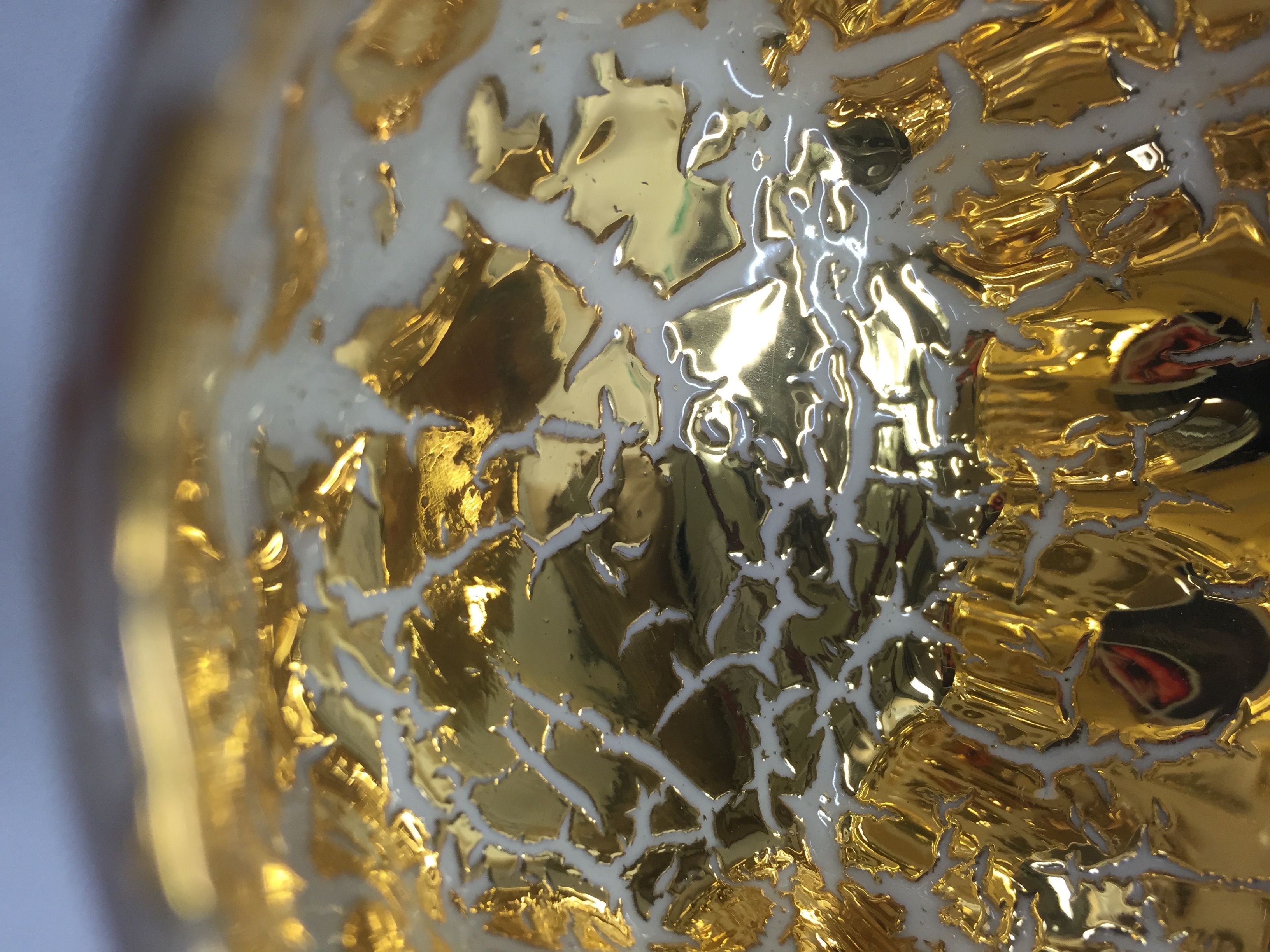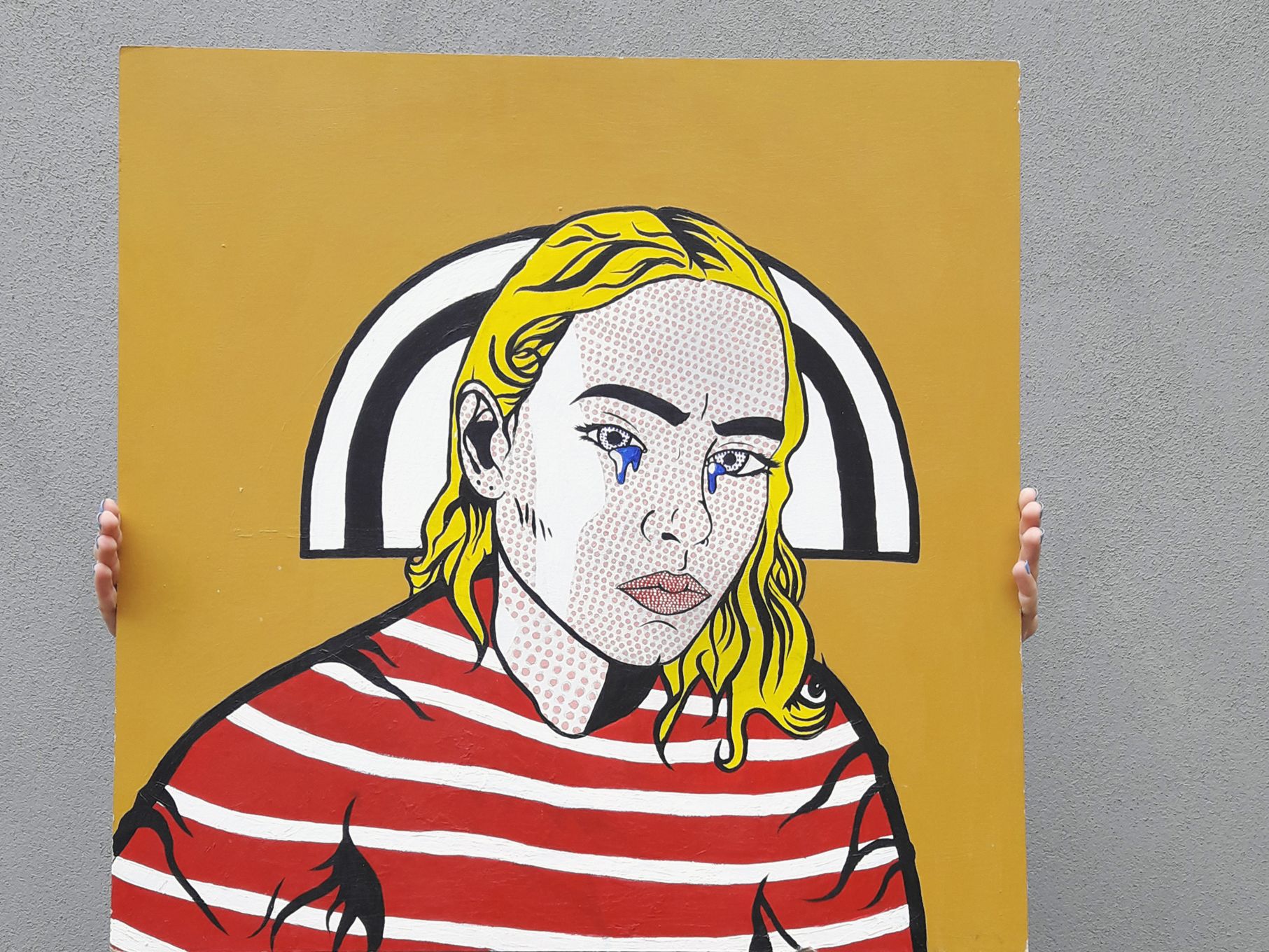Sharon’s tutorial will get you started with creating simple shapes or forms.
Often when using clay, you have to shape or wrap the material around a mould, but this hand building technique is based on using a simple flat 2-dimensional (2D) circle template.
Get going with this technique and you’ll be able to create practical designs – cups, vases, bowls, or more sculptural or abstract pieces by playing with the scale, variety of sizes and composition of your forms.
Make conical forms with clay
Video, Sharon Bertram, edited by Omar Hernandez del Canto.
Your circle template
Make the circles in your paper template concentric; i.e., two circles that fit within each other and are the same distance apart. For accuracy you can use a compass to measure and draw your circles.
Different types of clay
There are a few different types of clay you can use. Some of them require access to a kiln at your school or college or community project to fire the clay. This process makes the clay strong and durable.
Buff smooth clay is a multipurpose clay for hand building and throwing that can be either left for natural air drying or fired in a kiln. It’s good value for money and suitable for experimenting with a wide range of forms.
Air-drying clay (for example DAS) can be left to dry naturally. It’s good for modelling small to medium size pieces. You’ll need to work fast though as it dries very quickly, becoming brittle and fragile to use. Decorating your pottery piece with acrylic paint and coating with PVA glue will add strong colour and shine that will help protect your work.
Polymer clay is an oven baked clay that is a suitable resource for a beginner. Shrink your circle template right down and you could use this to make smaller items like jewellery.
Your kit
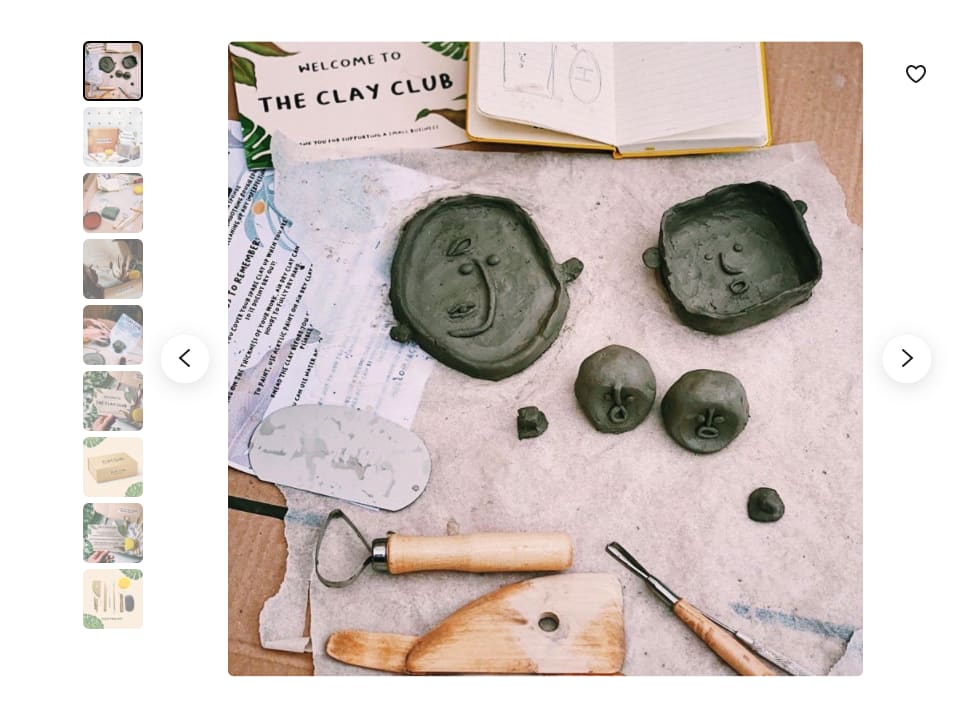
If there’s one piece of specialist kit you should buy Sharon recommends the cheese wire which is ideal for cutting large pieces of clay.
For good value materials and starter kits try Jack Laverick’s Clay Club
Amazon’s 8 piece modelling set is worth a look at too.
Work safely
Use a wooden board as a base when cutting and always cut away from yourself, slowly. Put the knife down into ball of clay after/in between use.
